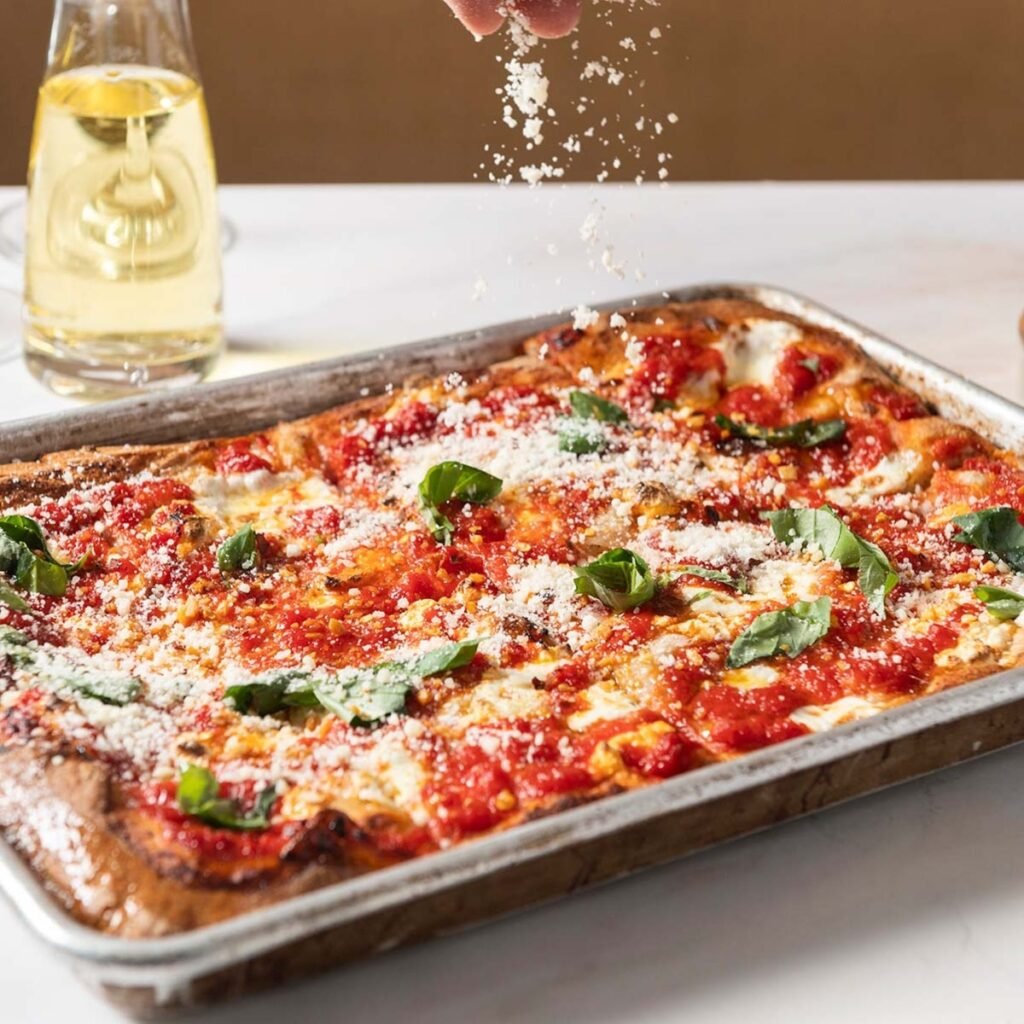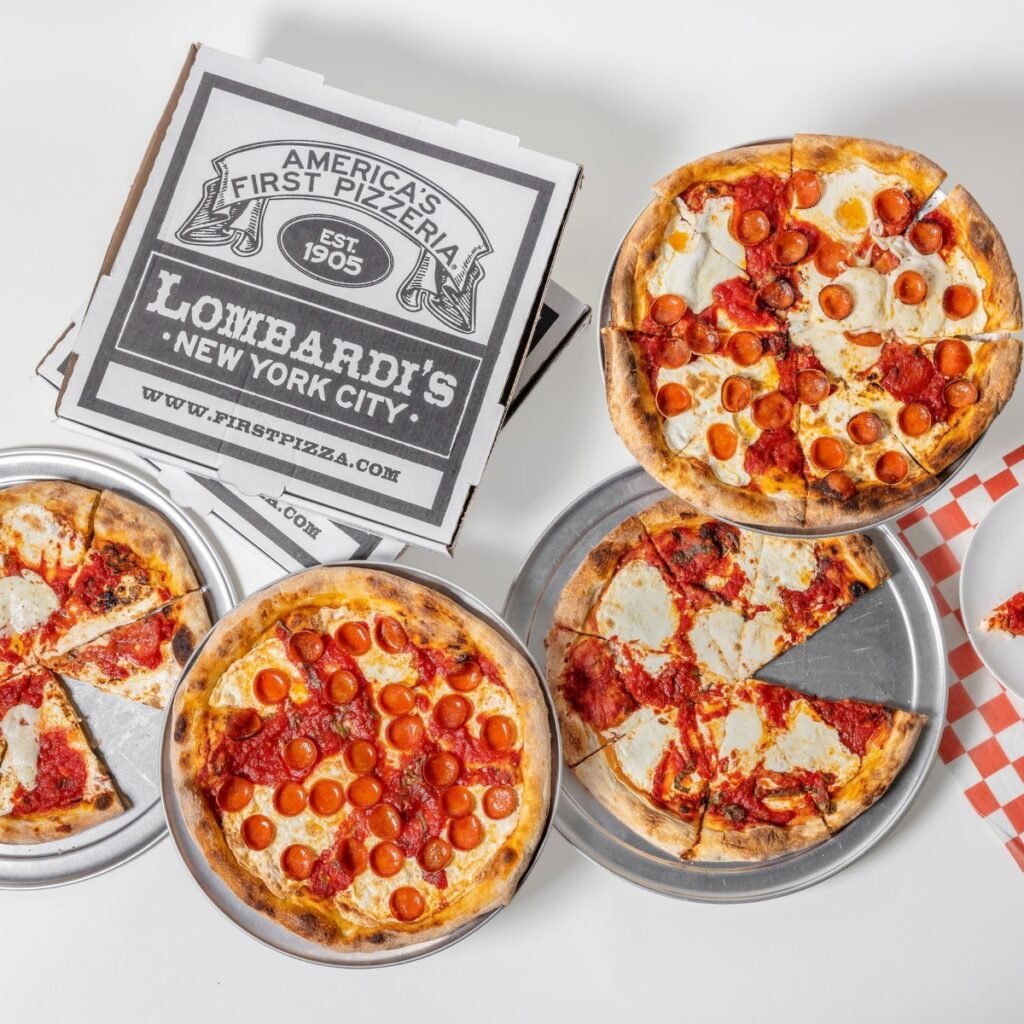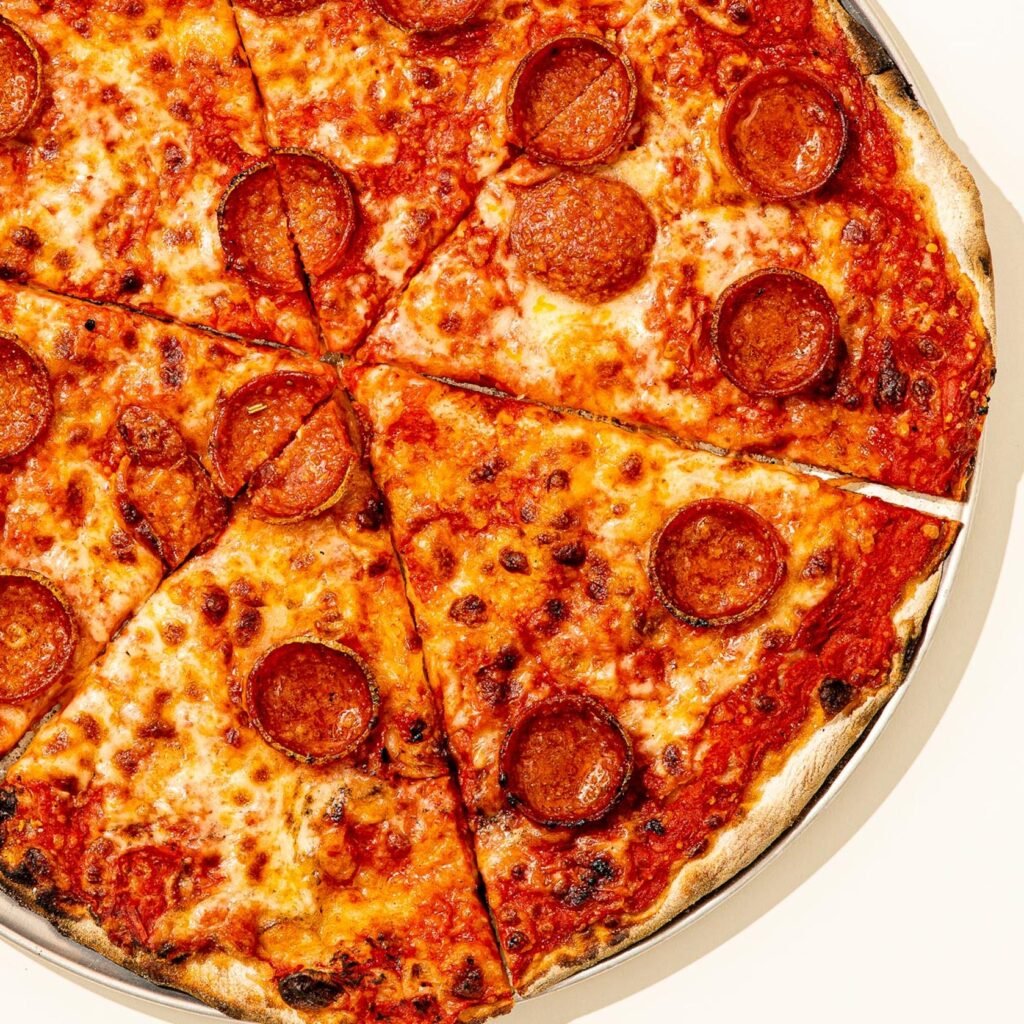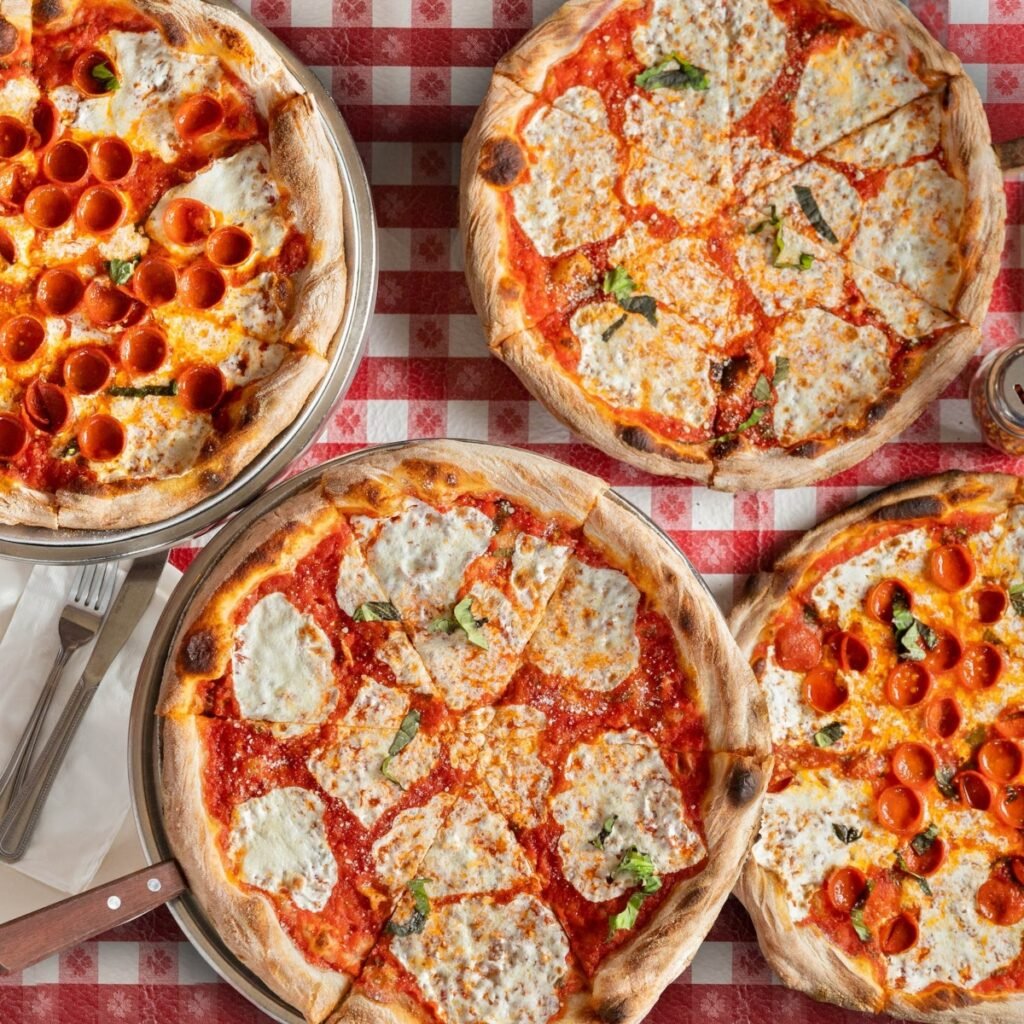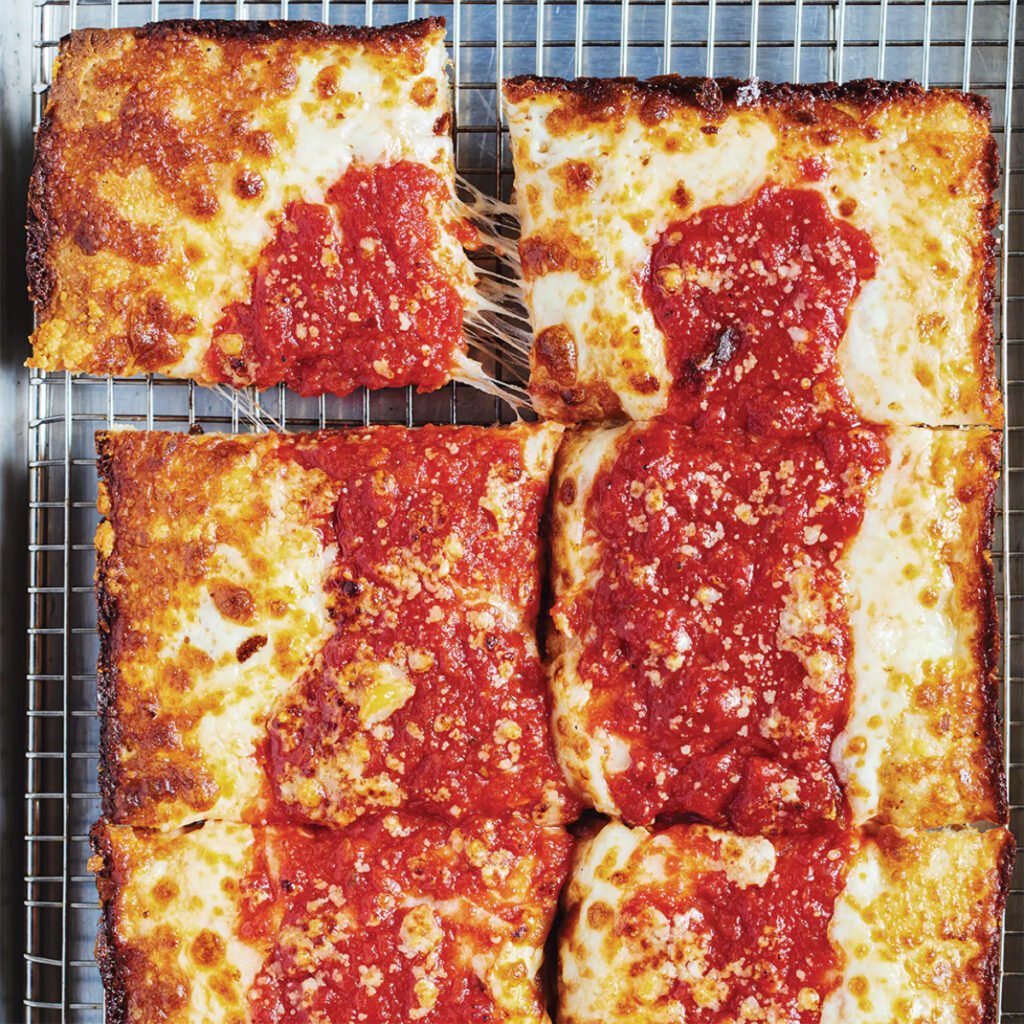In this article
THEY’RE BOTH RECTANGULAR PIZZAS, BUT THE SIMILARITIES END THERE
If you’ve ever visited a New York City pizza joint, then you probably already know that there are two primary pizza styles that NYC can call its own: There’s the classic, thin-crusted, round pie, ready to be cut into big, cheesy, foldable slices; and there’s Sicilian pizza, with its thick, fluffy crust and rectangular-cut slices.
But if you look carefully behind the counter at some of the city’s top slice shops, you’ll discover a third style that’s caught on in popularity in recent years: grandma pizza. At first glance, it may look similar to Sicilian pizza, but it’s actually different in several major ways. So what’s the difference between Sicilian pizza and grandma pizza?
What is the Difference Between Sicilian and Grandma Pizza?
If you look at a slice of Sicilian pizza and a slice of grandma pizza side-by-side, it’ll quickly become obvious that there are some important differences between the two:
The History of Sicilian and Grandma Pizza
Sicilian pizza, as its name implies, can trace its roots to Sicily. Traditional Sicilian-style pizza – that is, the pizza style that was predominant on the island in the mid-1800s – is called sfincione, and is thick-crusted and rectangular, similar to focaccia with toppings. Cheese is optional. This pizza style was brought by Sicilian immigrants to the United States, where it evolved into the Sicilian pizza we know today.
Grandma pizza can also trace its roots to Italian immigrants, who developed the style in their home kitchens, using standard American cooking equipment like sheet pans and home ovens instead of the communal bread ovens found in Italy.
The style remained relatively unknown until the mid-1990s, when a pizza chef named Umberto Corteo began selling grandma pizza at his popular Long Island pizzeria, Umberto’s of New Hyde Park. This pizzeria is today considered a pilgrimage-worthy ground zero of grandma pizza popularity, and it’s the reason why so many other pizzerias across the New York area began to sell it.
The Crust
The crust is the primary differentiator between Sicilian and grandma pizzas. After a Sicilian pizza crust’s dough is stretched on an oiled sheet pan, it’s allowed to rise for an extended period of time before toppings are applied and it’s baked. This gives it a crust that can be an inch thick, and it’s airy and chewy.
Grandma pizza, on the other hand, has a crust that isn’t given that extra time to rise before it’s topped and baked, so while it may still be thicker than a standard New York slice, it’s still much thinner and less chewy than Sicilian crust.
Both styles are baked on a sheet pan that’s been covered with olive oil, so the bottom is golden brown and crisp, with an almost fried texture.
The Cheese & Sauce Order
Most Sicilian pizzas are topped like traditional New York-style pizzas, with a layer of tomato sauce atop the crust, followed by cheese and toppings. Grandma pizza traditionally reverses the order, with sliced mozzarella cheese going down first, followed by an uneven layer of tomato sauce; by not covering the entire pizza with sauce, the cheese still gets golden brown and bubbly, creating a distinctive appearance.
Of course, there are no hard-and-fast rules when it comes to pizza, so some well-known pizzerias also reverse the cheese-sauce order on their Sicilian pies and put the cheese down first.
What Makes Sicilian Pizza Different?
As we’ve already made clear, Sicilian pizza is completely different from both the traditional New York-style slice as well as grandma pizza. A good way to think of Sicilian pizza is focaccia, but with plenty of cheese, sauce, and other toppings on top.
Why is it Called a Grandma Pizza?
Grandma style pizza has very humble origins, being baked at home by immigrant housewives (and as the years went on, grandmas). Calling it “grandma pizza” is a nod to these homespun origins.
Read More: What is Grandma Pizza?
Is Grandma Pizza Detroit Style?
Grandma pizza is definitely not Detroit-style pizza, another very trendy pizza style. It has a much thinner crust, and Detroit-style pizza is baked in deep steel pans. It’s closer in appearance to Sicilian pizza, but again the type of pan used is different, and Detroit-style pizza is constructed “upside-down” traditionally with stripes of sauce atop the cheese.
Most Iconic Grandma Pizzas and Sicilian Pizzas
If you’d like to try grandma-style pizza for yourself, there’s no need to go to New York! Iconic and delicious grandma-style pizzas are shipping straight to your door:

The James Beard Award Winner: Loring Place
Chef Dan Kluger won the James Beard Award for his cooking at NYC’s ABC Kitchen, and since opening Loring Place in 2016 it’s become one of Greenwich Village’s most acclaimed restaurants. His grandma pizza has been the star of the Loring Place menu for years.
This signature pizza is so beloved that in 2021 Kluger gave it its own offshoot, called Washington Squares. This pizza also has some whole wheat mixed into the dough, which imparts a nutty flavor.
The Vegetarian Cult Favorite: Traze Pizza Lab
Traze Pizza Lab was founded by Natalie DeSabato in New York City in 2015, and her grandma style pizzas are entirely vegetarian; some are even vegan. She started out serving her signature pizzas at punk shows and arts spaces in Brooklyn and Queens, and they proved so popular that she expanded well beyond pop ups.
Natalie’s small-batch vegetarian pizzas start with a well-fermented sourdough crust, which is twice-baked for fluffy-on-the-inside, crisp-on-the-outside perfection.
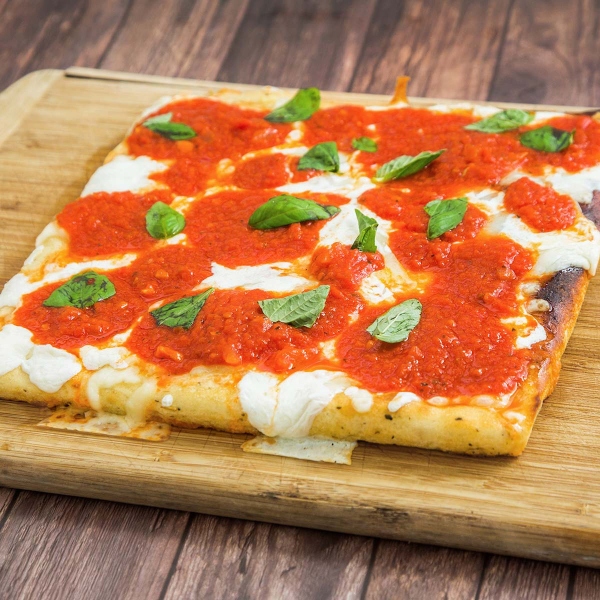
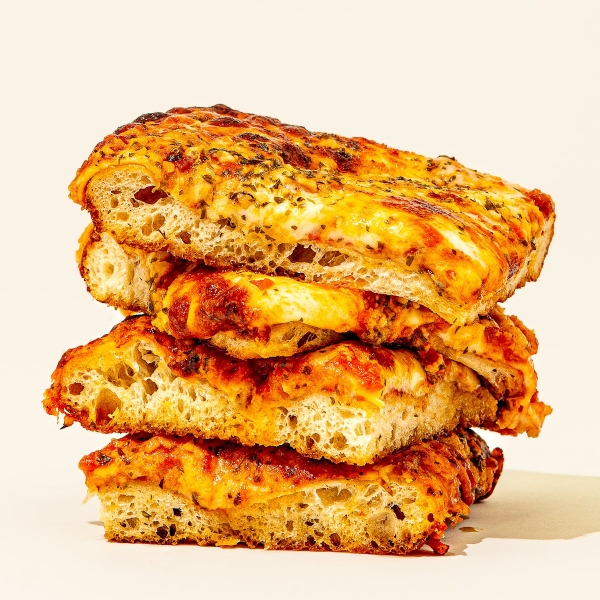
From a Food Network Star: Christian Petroni
Born and raised in the Bronx, Chef Christian Petroni has made a name for himself as one of New York City’s most prominent Italian-American chefs. While running the acclaimed pizzeria Fortina, he found stardom on the Food Network, where he’s appeared on shows including Guy’s Grocery Games and Diners, Drive-Ins, and Dives.
On his signature garlic butter Sicilian pizza, the cheese is ooey gooey, the marinara sauce has been slowly simmered for over eight hours, parmesan and pecorino give it a salty kick, and the rich garlic butter is speckled with garlic and Italian oregano.
And that’s just the start! From New York pizza to Detroit-style, America’s most legendary pizza is shipping nationwide with Goldbelly. Discover all of the pizza possibilities, and explore our Pizza Subscription, which will land a new pizza on your doorstep every month.
Read More: Guide to Regional Pizza Styles

